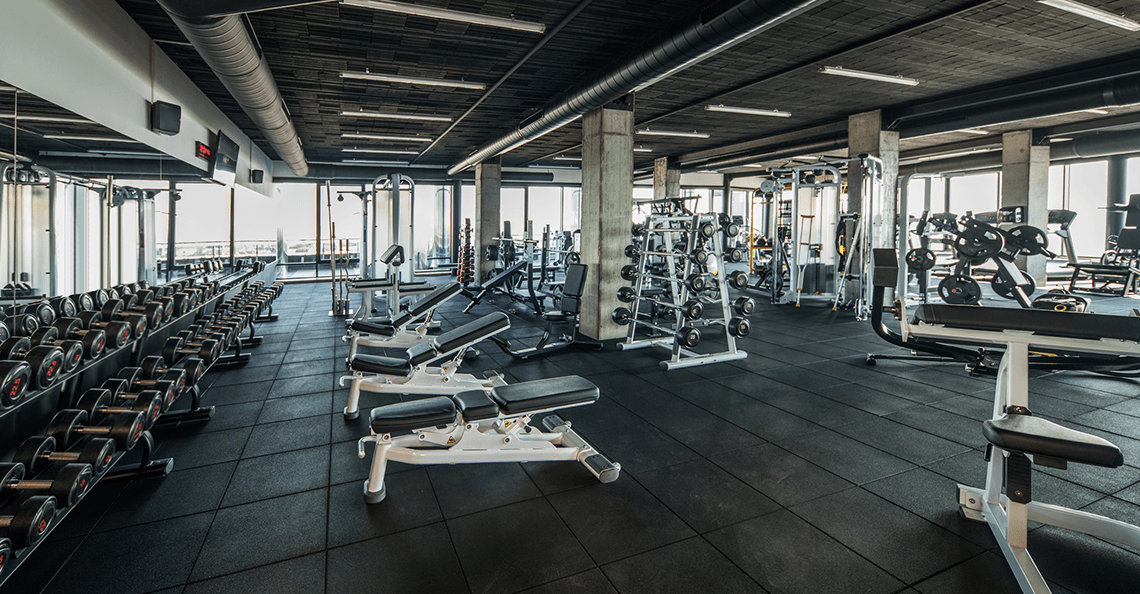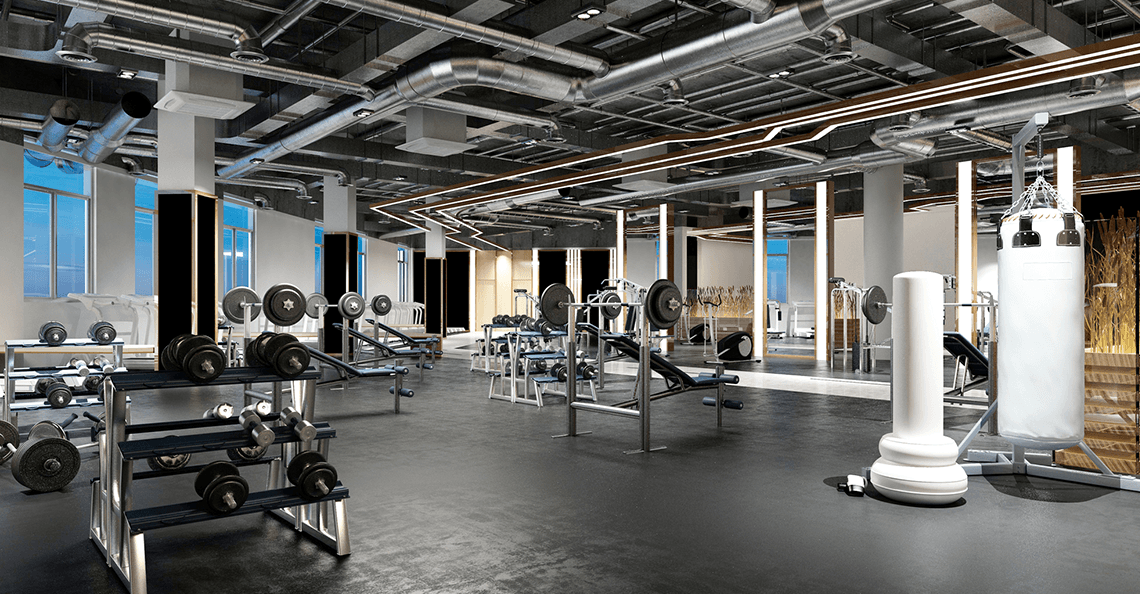Making the right decision about where to work means answering two questions:
- What type of facility is most appealing to you?
- What environment and opportunities will you find at an individual facility?
The second question involves three questions of its own:
- Do you think you can get along with the manager?
- What programs are in place to promote education?
- What tools and systems does the job provide to help you grow as a trainer?
To figure those things out, your best tactic is simply to visit the place. Chat up the trainers and staff to get a sense of whether they like each other and enjoy working there. If you’re still unsure, use LinkedIn to find others who work there (or used to), and connect with them on social media to ask specific questions.
You also have to consider pay and benefits, of course. Bills don’t pay themselves. But you never want to sacrifice experience and education for money, especially at the front end of your career.
But that leaves the first question. I can’t just tell you where to go; that choice is yours. But I can lay out the options to help you decide.
These are the three most common opportunities for personal trainers early in their careers:
Those aren’t the only options, as you surely know. Personal trainers also work in corporate wellness centers and facilities that specialize in sports performance or physical therapy. But those places are unlikely to give new trainers their first job.
And where you start is important. Your first job lays the groundwork for your entire career. (No pressure.) The right first job gives you the building blocks you need for the career you want.
You’re the only one who knows what that looks like.
READ ALSO: Create a Personal Trainer Business Plan in Six Steps
1. Commercial gym

Best for: the budding entrepreneur
This is where most personal trainers get their first job, and for good reason. You get clients right off the bat, along with access to all the equipment you need to train them. Because you’re new, no one expects you to be good, which means you’re allowed to ask questions and make mistakes (and learn from them).
Someone else takes care of accounting, marketing, and issues with individual members. While health benefits are increasingly rare in the fitness industry, some gyms still offer them, along with mentor programs and continuing education.
The base pay may not be great, but trainers are often paid on a sliding scale—anywhere from 40 to 66 percent of what the gym charges the client for a session. The more sessions you book each month, the higher the percentage you get to keep. That can be a lucrative arrangement for a motivated trainer with solid interpersonal skills.
Ambition may also be rewarded with sales bonuses, not to mention promotions. A commercial gym that’s part of a chain, or owned by a company with multiple facilities, can offer a clear, structured path to greater responsibility and bigger paychecks.
READ ALSO: 11 Top Trainers Talk About Their First Personal Training Client
The drawbacks: You must follow the gym’s rules. You may have to wear a uniform, and adjust your training to accommodate policies—no chalk or barefoot training, for example.
You may also be asked to sign a noncompete agreement, forbidding you from taking your clients to another gym if you leave. And side gigs tend to be discouraged, unless you can show how they contribute to the gym’s bottom line.
My advice: Two things. First, earn your voice. Whatever big-box gym you land in, there will be aspects you don’t like. I worked in a commercial gym for 14 years. I hated the music, the disproportionately high ratio of isolation machines to squat racks, and the session-cost payment model.
But at commercial gyms, you earn your right to an opinion. Keep your head down and mouth shut, work hard, and build a solid reputation as a knowledgeable trainer. Then you can push back against the norm.
Second, once you establish yourself, work on becoming an intrapreneur. With a little ingenuity and a lot of hard work, it’s entirely possible to become independently successful while working at a commercial gym.
Take ownership of specific duties (I eventually took over medical referrals from all 30 of my gym’s locations), and find ways to expand your role that benefit the company. Offer to teach in-house continuing education courses. Or if your gym doesn’t have those, offer to set one up.
READ ALSO: Five Ways to Dominate the Gym Floor
2. Private studio

Best for: the niche trainer
These smaller facilities tend to focus more on private instruction or small-group training.
Some rent space to experienced coaches who need a place to train their clients. Others hire trainers to work with their members, and then take a portion from each session (usually 30 to 50 percent). Because the price point tends to be higher, your take-home pay will likely exceed what you could make at a big-box gym.
Studios can charge more because they offer a better service in a better environment, and appeal to a more affluent, discerning clientele. You’ll often find hardwood floors, more specialized equipment, and fancier locker rooms. Because your clients will like training there, retention tends to be good.
Not all studios are high-end. Some specialize in niche markets: elite athletes, clinical populations, clients with obesity. In those places, you’ll be expected to develop knowledge specific to the clientele, and to deliver more individualized programs. If it’s a niche you want to focus on, great. If not, you may be better off at a commercial gym that gives you more diverse opportunities.
Education levels among the training staff can vary, from entry-level certifications to graduate degrees and beyond. Just keep in mind that your people skills may ultimately be more valuable than your credentials.
As your clients’ main point of contact, you’ll be expected to represent the brand. Compared with larger facilities, you’ll have higher accountability. But you may, on the flip side, also find more leeway to operate as you see fit.
The drawbacks: Because the advertising budget tends to be smaller, you have to work harder to acquire clients. You won’t have quite as much permission to mess up. And limited space can mean cramped quarters when the place is full.
My advice: Build relationships with everyone you can. Service delivery is paramount when the model is an intimate one. Like Jonathan Goodman says, people buy trainers, not training. That’s especially true here.
Final tip: Try to take advantage of any perks your facility may offer. Many provide in-service seminars and reimburse you for continuing education. You can’t underestimate the value of education.
READ ALSO: These Are the Best Advanced Personal Training Certifications
3. CrossFit-type facility

Best for: the aspiring fitness coach
CrossFit boxes, and those with similar setups and offerings, haven’t always had the best reputation. Critics say the cost of entry is too low and the injury rate too high. Still, the overall education of trainers is improving, and the desire to retain clients has changed the onboarding and training strategies at many of them.
That’s good news for an entry-level personal trainer. Bare-bones, industrial-style training facilities continue to be popular. Their dedicated and enthusiastic clients, including a lot of weekend warriors, make your job easier. Most of them are looking to get their butts kicked, lose some fat, gain some muscle, and earn bragging rights by being able to do things others can’t.
Minimal equipment means more emphasis on creative programming, incorporating lots of body-weight movements.
Perhaps the best aspect: the camaraderie. The group environment emphasizes cooperation and mutual encouragement. It’s a good place to learn to be a great coach.
For those looking to open their own facility one day, it’s also a great model for keeping start-up and operating costs low. It can be quite lucrative if run well.
The drawbacks: You’re getting in long after CrossFit peaked as a cultural phenomenon. While the audience is still substantial, anyone with a basic certification and enough money for a licensing fee can open one up and compete directly for your clients. That’s why these facilities got that reputation I mentioned earlier.
Before taking the job, make sure the place has a solid onboarding program for new coaches to help you start off right. You really don’t want to lead a lot of people in a group workout until you’re sure you know what you’re doing.
My advice: If this is where you start, focus on what you can apply to future work at other types of facilities. How can you streamline your programs to avoid the bottlenecks that would slow you down in a commercial gym? What’s the best workout you can give a client with the least equipment, or in the smallest space?
And really, those points apply to any entry-level job for a personal trainer. You’re going to make mistakes. What matters is what you learn from them, and how you apply those lessons not just to your current job, but to future gigs as well.
Hard work, excellent service, and great relationships with clients are the keys to a great career in personal training, no matter where you start or where you end up.
READ ALSO: What’s the Difference Between a Fitness Coach and a Personal Trainer?











